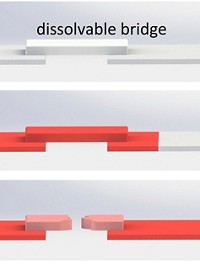Advertisement
Grab your lab coat. Let's get started
Welcome!
Welcome!
Create an account below to get 6 C&EN articles per month, receive newsletters and more - all free.
It seems this is your first time logging in online. Please enter the following information to continue.
As an ACS member you automatically get access to this site. All we need is few more details to create your reading experience.
Not you? Sign in with a different account.
Not you? Sign in with a different account.
ERROR 1
ERROR 1
ERROR 2
ERROR 2
ERROR 2
ERROR 2
ERROR 2
Password and Confirm password must match.
If you have an ACS member number, please enter it here so we can link this account to your membership. (optional)
ERROR 2
ACS values your privacy. By submitting your information, you are gaining access to C&EN and subscribing to our weekly newsletter. We use the information you provide to make your reading experience better, and we will never sell your data to third party members.
Analytical Chemistry
Inexpensive Paper Device Detects Explosives In Seconds
Forensics: Using a color-change reaction, the device can detect nanogram quantities of trinitro aromatic explosives
by Sarah Webb
May 13, 2014

At airport security check points, officials need quick, inexpensive tests for explosives. Now researchers in Australia report a paper-based microfluidic device that changes color in seconds when exposed to nanogram quantities of TNT and similar explosive compounds (Anal. Chem. 2014, DOI: 10.1021/ac403062y).
TNT and other trinitro aromatic explosives produce colorful anions when they react with hydroxide or methoxide ions. Lucas Blanes of the University of Technology, Sydney, and his team wanted to use this color change as a quick way to detect these explosives on a microfluidic paper-based analytical device (µPAD). The team printed 5- to 10-mm-diameter rings of wax onto filter paper to define the sample regions and treated the inner circles with various concentrations of sodium and potassium hydroxide. They also left some circles untreated. Each device costs a penny, or even less, to make, Blanes says.
To test explosive-treated surfaces, they sprayed a mix of methanol and water on the surface and then dabbed the paper device on it. In the presence of tens of nanograms of explosives, the color change began within seconds in the spots treated with hydroxide. The device did not change color in the presence of interfering compounds such as cleansers, detergents, or other types of explosives.
To confirm the results, the team used a hole punch to remove the untreated paper circles and extracted organic compounds with a solvent. They then tested the solution with a lab-on-a-chip device made by Agilent. Using this more sensitive technique, they could detect as little as 7 ng of TNT.
The researchers have been developing similar methods for other types of explosives. Blanes believes that these types of detection devices also could help police in developing countries by providing them with low-cost tools for forensic analysis.





Join the conversation
Contact the reporter
Submit a Letter to the Editor for publication
Engage with us on Twitter